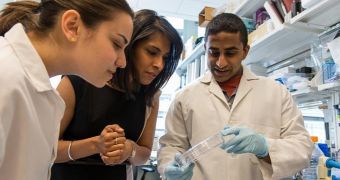A team from MIT, led by Dr. Sangeeta Bhatia, director of MIT’s Laboratory for Multiscale Regenerative Technologies, has developed miniature 3D bioprinted livers that can be implanted in living organisms.
Perhaps it sounds more amazing than it is, put that way, but the miniature livers have, indeed, been implanted. Into lab mice, to be precise.
Moreover, they can be used to test the toxicity of drugs, to determine if they would be safe to use in treating humans of various diseases.
We have been seeing 3D bioprinted livers quite a lot this year, because livers are among the easiest organs to bioprint. Replication is one of the liver's special skills, one might say.
You see, unlike other organs, the liver does not need stem cells to regenerate or duplicate, meaning that a normal liver can regenerate independently. It is predisposed towards self-healing, one could say.
The bioprinted miniature liver that the MIT team created is as small as the head of a pin needle, and is more or less transparent, albeit bearing a pinkish hue. Bhatia liken it to contact lenses.
The tiny liver contains a million cells or so. A very small number compared to the hundred billion cells in a human liver, but still enough for medicinal purposes (the liver regenerates, so it can be used to test drugs again and again).
Dr. Bhatia hopes to, eventually, 3D print a full-size human liver, one that could be used in human-to-human organ transplants. Currently, the time frame for any research allowing this is 10 years.
It remains to be seen how much longer it will take for 3D bioprinting to extend to other organs, like the pancreas or the heart. Hopefully, not too many decades, especially since 3D printed blood vessels have already been made successfully.
3D bioprinting will probably not reach its full glory until the truly complex parts of the human body are successfully “fabricated” via additive manufacturing: the human eye comes to mind, as do kidneys. No doubt, the scientific community will take it in steps, moving from 3D printed test samples to implantable 3D printed tissues and, only much later, to complete organs.
“At this point, we have so many fewer organs than we need that we would like to augment the supply, and ultimately, we would love to replace them, but I think we’re really a long way from that,” Dr. Bhatia told WUWM in an interview.

 14 DAY TRIAL //
14 DAY TRIAL //